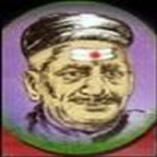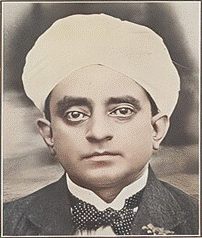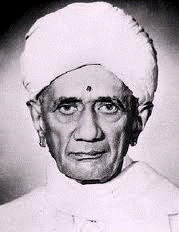PREVIOUS
Freedom Fighters from Tamil Nadu Part – 10
Freedom Fighters from Tamil Nadu Part – 10
(இதன் தமிழ் வடிவத்திற்கு இங்கே சொடுக்கவும்)
49. Thandavarayan Pillai
Early Life and Background
- He was born in 1700 in Aralikottai (Mullaiyur), Sivagangai Kingdom and son of Kattavaraya Pillai.
- He belonged to the Karkathar Vellalar community.
- He was noted for his education, ability, and wisdom, with a deep passion for Tamil.
Administrative Roles and Achievements
- Dalavay and Pirathani: He served as Dalavay (military chief) and Pirathani (Chief Minister) under three rulers of Sivagangai Samasthanam.
- Service to Kings: He worked under King Sasivarna Periya Udaya Thevar (1730–1750) and King Muthu Vaduganatha Thevar (1750–1772).
- Later he served Queen Rani Velu Nachiyar.
- Military and Diplomatic Efforts: He advised Queen Velu Nachiyar to avoid British invaders.
Administrative Skills and Personal Qualities
- Administration and Development: He was renowned for his good administration and responsible for the development of Sivagangai Samasthanam.
- Attributes: He was known for charity, excellence, respect for family, admiration for music, and proficiency in accounting.
- Recognition and Honors: He was valued by Rajasuli Vadhuganatha Durai, honored with gifts such as a palanquin, staff, horse, and land.
Legacy and Contributions
- Influence: He preserved the estate’s wealth and taught others, including the Maruthu brothers, fostering strong bonds of affection.
Key Historical Roles
- Military Support: He provided shelter and assistance to the Nayakars during the battle of Ammaya Nayakkanur, showcasing bravery alongside Sasivarna Thevar and the Maruthu brothers.
Cultural Impact
- Literary Reference: His virtues are detailed in the Tamil work "Maan Vidu Thoodu" by poet Kavi Rajar, published by Tamil Thatha U.Ve.Sa.
Campaign Against Madurai
- Succession and Conflict: After Sasivarna Thevar's death in 1750, his son Muthu vaduganatha Thevar became the ruler.
- By 1752, Ramnad Sethupathi and Muthuvaduganatha were appointed as rulers of Madurai.
- The Mysore commander Mayana defeated Vijayakumar Nayakar and took control of the throne.
- Counter-Offensive: Ramnad leader Vellaiyan and Sivagangai minister Thandavaraya Pillai led a successful campaign against Mayana, defeating him and reclaiming Madurai for the rightful rulers.
- Temple Renovations
- Kunnakkudi Murugan Temple: Thandavaraya Pillai oversaw renovations of the Kunnakkudi Murugan Temple, demonstrating his commitment to religious and cultural preservation.
- Vaiyapuri Tank and Nandavanam Veda School: He established the Vaiyapuri tank and set up the Nandavanam Veda School, contributing to both religious and educational infrastructure.
- Further Contributions: Contributed to the construction and maintenance of temples in Tiruppathur and Tirukkottiyur.
- Ensured daily rituals and offerings to Murugan were maintained, highlighting his dedication to religious duties.
Lotus Medal Award
- Honor and Recognition: On April 28, 1747, Thandavaraya Pillai was awarded a Lotus Medal by King Muthuvaduganatha Thevar.
- This honor, also recognizing his contributions alongside Sasivarna Thevar, symbolized his esteemed position as the first minister of the Sivagangai kingdom.
Battle at Kalaiyar Temple
- Attack and Defense: In 1772, Sivagangai faced threats from Major Smith and Panjeur’s army.
- Thandavaraya Pillai organized defenses and traps to protect the town.
- Capture of Sivagangai: Despite his efforts, on June 21, 1772, Smith and Panjeur captured Sivagangai and the Kalaiyar Temple area, marking a significant loss for the defenders.
Final Campaigns and Death
- Restoration Efforts: After Muthuvaduganatha Thevar’s death, Thandavaraya Pillai, supported by the Maruthu brothers, comforted Queen Velunachiyar and pledged to restore the lost kingdom.
- They sought refuge in Virupachi near Dindigul, where Thandavaraya Pillai had connections with Gopala Nayakar.
- Request for Assistance: In December 1772, Thandavaraya Pillai wrote to Hyder Ali seeking support to reclaim the territories from the Nawab, offering thousands of horses and soldiers for the cause.
Death and Legacy:
- Thandavaraya Pillai passed away in Virupachi in 1773 due to old age and health issues.

50. C.P. Ramaswami Aiyar
Early Legal Career and Political Affiliations
- Eminent Lawyer: C.P. Ramaswami Aiyar was a prominent lawyer in the Madras Presidency, noted for his legal expertise and political activism.
- Servants of India Society: He was an admirer of Gopal Krishna Gokhale, he joined the Servants of India Society in Poona, aligning himself with reformist ideals.
Legal and Political Milestones
- In the year 1912, he fought on behalf of Jiddu Narayaniah in a high-profile custody case against Annie Besant, securing the custody of Narayaniah's two sons.
- Collaboration with Annie Besant: He became an associate of Annie Besant, collaborating in organizing the Home Rule League.
- He served as vice-president and published the daily newspaper ‘New India’ for the League.
- Editing under Constraints: During Dr. Annie Besant’s internment by the British in 1917, Ramaswami Aiyar edited ‘New India’ from his garden to circumvent printing restrictions imposed by the sedition law.
Advocacy and Legal Defense
- Collector Ashe Murder Case (1912): He argued on behalf of Vanchinathan in a case involving the murder of Collector Ashe.
- Support for Subramanya Bharathi: He assisted in securing the release of Subramanya Bharathi, who was arrested after re-entering Madras Presidency in 1918.
- Ramaswami Aiyar charged no fees for his legal assistance to Indian defendants against British authorities.
Political Roles and Legislative Achievements
- Indian National Congress: He served as Secretary of the Indian National Congress from 1917-1918 alongside Pandit Jawaharlal Nehru.
- He was early leader in the Congress movement.
- Legislative Council Membership (1919): He elected as a Member of the Legislative Council from Madras City under the Reformed Constitution.
- Advocate-General (1920): He was appointed as Advocate-General of the Madras Presidency, responsible for the introduction of the City Municipalities Act and the Madras Local Boards Act.
Administrative and Diplomatic Contributions
- Executive Council of Madras (1923): He was nominated to the Executive Council of the Governor of Madras, overseeing Public Works, irrigation, ports, and electricity.
- League of Nations Delegate (1926-1927): He served as the Indian Delegate at the League of Nations in Geneva and was Rapporteur of the Committee on Public Health.
- Madras Music Academy (1927): He had inaugurated the Madras Music Academy during the 1927 session of the Indian National Congress to support and preserve Indian artistic traditions.
Later Roles and Achievements
- Law Member and Round Table Conferences (1931-1932): He acted as Law Member of the Government of India and attended the First and Third Round Table Conferences in London.
- World Economic Conference Delegate (1933): He represented India as the sole Indian delegate at the World Economic Conference.
Diwan of Travancore and Social Reform
- Temple Entry Act (1936): As Dewan of Travancore, he introduced the Temple Entry Act, the first government action in India to abolish untouchability by permitting entry of all castes into Hindu temples.
- He received praise from Mahatma Gandhi for this significant reform.
Legacy and Death
- C.P. Ramaswami Aiyar passed away on September 26, 1966.

51. K.A. Kasi visvanatha Mudaliyar
Early Life and Background
- Birth and Family: He was born on March 8, 1912, in Tiruchengode, Tamil Nadu, to Arunachala Mudaliyar.
- He inspired by the philosophies of Mahatma Gandhi and C. Rajagopalachari (Rajaji), he was actively involved in social reforms from a young age.
Involvement in the Freedom Struggle
- Activism: He participated in the freedom struggle, focusing on the abolition of untouchability and the agitation against toddy shops.
- Imprisonment: He arrested and imprisoned for six months in Alipore Jail due to his involvement in political activism.
Leadership and Community Service
- Tiruchengode Taluk Committee: He served as the head of the Tiruchengode Taluk Committee from 1934 to 1954, during which he was actively involved in community service.
- Fundraising: He collected funds for the welfare of Harijans (scheduled castes) and the weavers' community, demonstrating his commitment to social upliftment.
- Meetings with Leaders: He had the opportunity to meet prominent leaders such as Gandhi, Jawaharlal Nehru, and Subhas Chandra Bose (Netaji), influencing his activism and leadership.
Contributions to Weavers' Welfare
- Nesavalar Kooturavu Sangam: He had founded the Nesavalar Kooturavu Sangam in Tiruchengode and served as chairman and secretary from 1942 to 1980. The organization played a key role in the welfare of weavers.
- Kasiviswanathan Nagar: The weavers' colony in Tiruchengode was named "Kasi viswanathan Nagar" in honor of his significant contributions to the welfare of the weaver community.
- Inauguration Ceremony: During the opening ceremony of the weavers' colony, the Chief Guest was Rajaji, highlighting the importance of the event and the recognition of Kasi visvanatha Mudaliyar's efforts.
Death:
- K.A. Kasivisvanatha Mudaliyar passed away on September 11, 1980.

-------------------------------------


